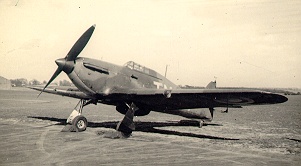Biographical Sketches
WILBUR AND ORVILLE WRIGHT
Wilbur Wright was born April 16, 1867, on a farm not far from New
Castle, Indiana, Orville was born in Dayton, Ohio, on Aug. 19,
1871. Their father, Bishop Milton Wright of the United Brethren
Church, settled permanently in Dayton about 1884, his duties
having previously taken the family to Iowa and Indiana. Neither
Wilbur nor Orville received a high school diploma, and their
1884
formal schooling was interrupted by their interest in practical
affairs, first a printing business and later, beginning in 1892,
their bicycle shop. They began by selling bicycles but soon added
a repair shop, and in 1895 they began to manufacture bicycles.
In their spare time, they read technical articles and books, and
their interest in aeronautics gradually increased. The glider
flights of Octo Lilienthal attracted their interest as well as
works by Octave Chanute and Samuel P. Langley. Their first
glider experiments were conducted at Kitty Hawk, N.C., in 1900,
and they tested their second glider there in 1901. Some of the
Wright Brothers' work was observed and constructively criticized
by Octave Chanute, and at his invitation, Wilbur reported upon
their experiments before the Western Society of Engineers. This
public review of their work led the brothers to verify their
ideas by the use of a wind tunnel which they built themselves. By
the end of 19O1 they had tested more than 200 wing types and had
compiled tables of data upon which they felt they could rely.
Their glider of 1902 had almost double the efficiency of their
previous ones, and when they returned to Kitty Hawk that year,
they made more than 1,OOO flights. By the end of 1902 they were
ready to begin building a powered machine. With the aid of their
mechanic, Charles Taylor, they designed and built and an engine
with the required lightness and power--12 hp at 1200 rpm,
weighing 170 pounds. They also designed propellers.
The brothers returned to Kitty Hawk in November, 1903 and
completed the airplane there. After overcoming a number of
difficulties, they made the first man-carrying powered flights in
history on December 17, 1903. The first flight, with Orville
as
pilot, covered about 120 feet and lasted 12 seconds. Wilbur, on
the fourth and longest flight of the day, flew 852 feet in 59
seconds.
The brothers returned to Ohio and conducted further experiments
near Dayton at Huffman Prairie. They attracted little attention.
By the end 1904 they could keep the machine up for five minutes
and fly complete circles. The brothers made more than two hundred
flights in 1904 and 1905, and a patent was granted for the plane
on May 22, 1906, but it was not until 1908 that they began to
receive credit and attention for their invention. In that year
Wilbur, flying in France, carried passengers on numerous flights
and established distance and altitude records. Orville, flying
at Fort Myer, Va., was having equal success in the official Army
trials, until the failure of a propeller caused the accident
which proved fatal to his passenger, Lieut. Thomas E. Selfridge,
and injured Orville severely. He soon recovered and joined Wilbur
in France.
After further successful flights in France, Italy, and England,
the brothers returned to the United States, and a two-day
celebration was held in Dayton in their honor in June, 1909. The
Wright plane passed all tests at Fort Myer successfully and was
accepted by the Army on August 2. Later in the year Orville made
a number of flights in Germany, and Wilbur flew at the Hudson
Fulton celebration in New York. An American company to
manufacture Wright planes was formed in November 1909 and the
brothers found themselves immersed in business affairs,
manufacturing and selling planes, arranging flying exhibitions,
training pilots, and engaging in patent suits against Glenn
Curtiss and others.
The courts decided the suits in favor of the Wrights, but worn
out by the long patent struggle, Wilbur died of typhoid fever in
Dayton, May 30, 1912, at the height of his career. He had made
his last flights in May 1910. Orville continued flying actively
until 1915 when he sold his interest in the Wright Company. His
last flight was made in 1918.
Though he served on the National Advisory Committee for
Aeronautics and maintained an office in Dayton, he lived quietly
there for the rest of his life. He died on January 30, 1948.
BISHOP MILTON WRIGHT
Milton Wright, father of the Wright Brothers, Bishop of
the United Brethren in Christ Church, was an influential clergy-
man for over 50 years. Born November 17, 1828, in Rush County,
Ind., largely self-educated, he joined the White River Confer-
ence of the United Brethren Church in 1853. In 1856 he was sent
as missionary to Oregon, and the next year became principal of
Sublimity College, Oregon, remaining two years, then returning to
Indiana. There he taught in the public schools, and served as
a circuit preacher and presiding elder. For one year he taught
theology at Hartsville College, Ind., and in 1869 was elected
editor of the Religious Telescope, the Church paper, located in
Dayton, Ohio. After serving eight years as editor, he was
elected Bishop in 1877, served until 1881, was re-elected in
1885, and finally retired from active church service in 1905.
He
was vigorously involved in a dispute over secret societies which
split the United Brethren Church in 1889. He was later active
in a scandal involving M. F. Keiter and the United Brethren
Church's publishing establishment. Bishop Wright retired in 1905
and lived together with his sons, Orville and Wilbur, and his
daughter, Katharine. He died at Orville's Oakwood home the age
of 88 on April 3, 1917.
|
|










